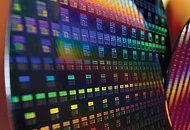Wednesday, September 25th 2019

TSMC to Begin Mass Production of 5nm Chips in 2020
According to industry sources over at DigiTimes, TSMC will begin mass production of its 5 nm node in March 2020, when companies using the 5 nm PDK can tape out their designs and integrate them into future products. Going into volume production two years after the 7 nm node, 5 nm is trying to put Moore's Law back on track again.
Built using the Extreme Ultra-Violet lithography (also known as EUV), 5 nm node is supposed to utilize existing FinFET transistors along with many improvements in speed, power and density when compared to existing 7 nm node. Speed is supposed to increase by around 15%, while density will improve by as much as 80%, which is excellent news for everyone. Noticeable power reduction is also present and it is now possible to have about 30% reduction in power consumption, while also enjoying additional speed and density improvements that new node brings.
Source:
DigiTimes
Built using the Extreme Ultra-Violet lithography (also known as EUV), 5 nm node is supposed to utilize existing FinFET transistors along with many improvements in speed, power and density when compared to existing 7 nm node. Speed is supposed to increase by around 15%, while density will improve by as much as 80%, which is excellent news for everyone. Noticeable power reduction is also present and it is now possible to have about 30% reduction in power consumption, while also enjoying additional speed and density improvements that new node brings.

20 Comments on TSMC to Begin Mass Production of 5nm Chips in 2020
5nm will be welcome in mobile CPUs (both ARM and x86) and in IoT.
www.techpowerup.com/259139/amd-updates-roadmaps-to-lock-rdna2-and-zen-3-onto-7nm-with-2020-launch-window
Fabs are certainly being retrofitted as we speak if their market target date is next year.
Please... stop this bullshit with Moore's Law. Theory which was very lucky for him and which was met by people moving on his track.
R&D costs (unallocated) don't depend on how much of the product you sell, while manufacturing costs do (allocated).
The more you spend on R&D, the more you have to sell afterwards.
Or backwards: expected gross profit limits how much you can spend on R&D.
What makes TSMC's situation special is that there isn't much competition.
They can make their target revenue with high price and low volume.
www.techpowerup.com/259139/amd-updates-roadmaps-to-lock-rdna2-and-zen-3-onto-7nm-with-2020-launch-window